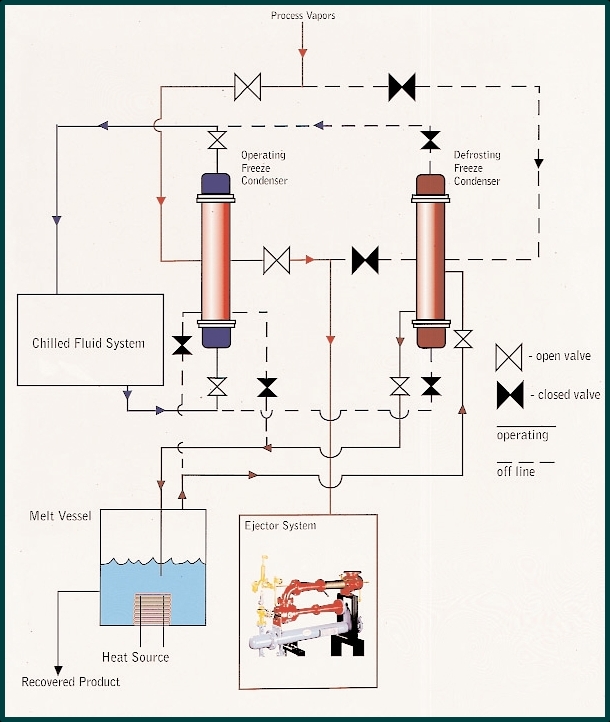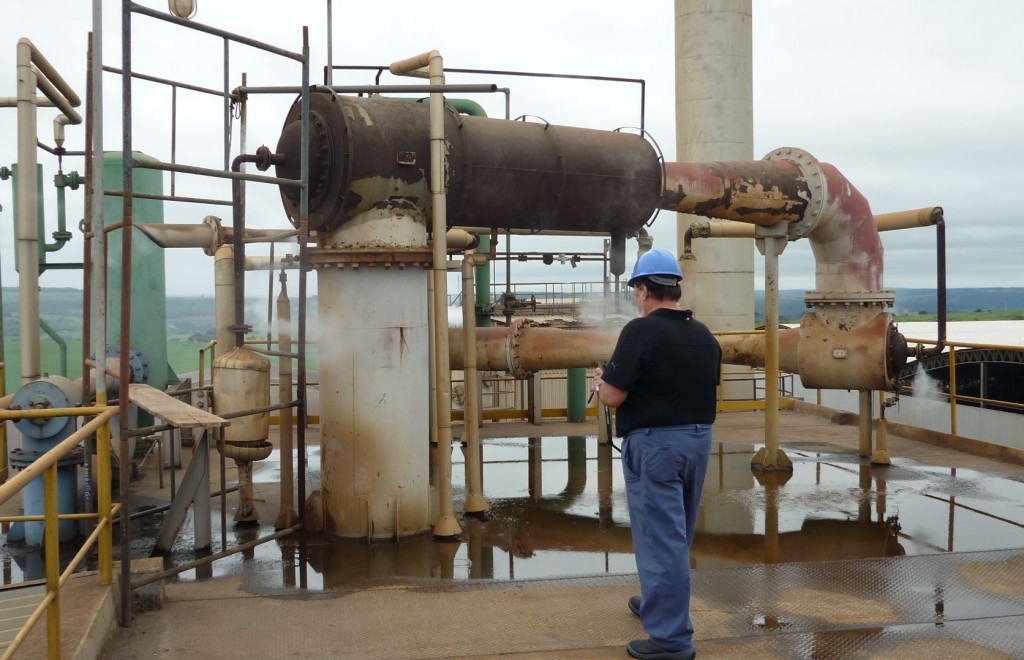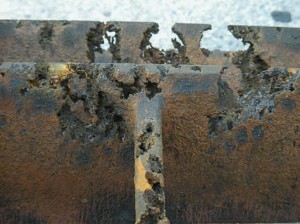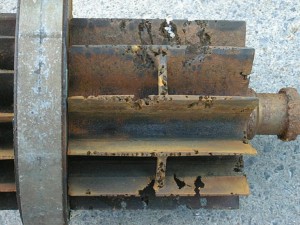O que é Ice Condensing? – What is Ice Condensing?
jun 05 Number of View :14685Você já deve ter ouvido falar em Ice Condensing ou algum outro termo parecido. Na realidade o uso do termo “condensação” não é adequado, pois o fenômeno que ocorre não é condensação e sim uma desublimação. O termo é muito pouco utilizado e desta maneira desconhecido.
Sublimação é a passagem do estado sólido diretamente para o estado gasoso. Desublimação é justamente o contrário: é a passagem do estado gasoso diretamente para o estado sólido, sem passar pelo estado líquido.
Várias companhias desenvolveram este tipo de equipamento para se reduzir a carga a ser aspirada pelo sistema de vácuo, solucionar um problema de cheiro no meio ambiente, reduzir a contaminação de utilidades e reduzir o consumo de vapor e água em processos onde existe uma carga muito grande de vapor a ser aspirado sob vácuo, como é o caso dos desodorizadores de óleo comestível ou desacidificadores de óleo para produção de biodiesel.
Veja no artigo da Graham Manufacturing Co, o que é é como funciona este sistema. A Graham comercializa este sistema com o nome de ECO-Freeze. Este é o melhor artigo sobre este assunto. Aproveite.
CLIQUE AQUI PARA VER O ARTIGO EM PDF
CLICK HERE TO SEE THE ARTICLE IN PDF
You have probably heard of Ice Condensing or some other similar term. In fact the use of the term “condensation” is not appropriate because the phenomenon that occurs is not condensation but a desublimation. The term is seldom used and thus unknown.
Sublimation is the transition from the solid state directly to the gaseous state. Desublimation is just the opposite: it is the passage of gaseous state directly to solid state without passing through the liquid state.
Several companies have developed this kind of equipment in order to reduce the load to be aspirated by the vacuum system, to solve a problem of odor in the environment, to reduce the contamination of utilities and to reduce the consumption of steam and water in cases where there is a very large load vapor being hold under vacuum, as in the case of edible oil deodorizer or oil deacidification to biodiesel production.
You will see in this article from the Graham Manufacturing Co, what is and how this system works. Graham system is marketed under the name “ECO-Freeze”. This is the best article on this subject. Enjoy
My Answer to the Article on Power Magazine – Minha Resposta ao Artigo na Power Magazine
mar 28 Number of View :46146If you read the article “Condenser Backpressure High? Check Vacuum System Sizing” ( http://www.powermag.com/issues/features/4338.html ) in the February 2012 edition of the Power Magazine and found that something is missing, please read my answer to the editor. Up to now no answer was received.
Please note that the intention of this letter is to clarify and not to confront, once vacuum is always considered a mistery revelled to few people, what is absolutely not true.
Se você leu o artigo “Condenser Backpressure High? Check Vacuum System Sizing” ( http://www.powermag.com/issues/features/4338.html ) na edição de Fevereiro de 2012 da Power Magazine e achou que estava faltando alguma coisa, por favor leia a minha resposta ao editor. Até o momento não recebi nenhuma resposta.
Por favor entenda que esta carta é apenas para esclarecer e não confrontar, já que quando se fala de vácuo, muitos consideram ser um segredo revelado para poucos, o que não é absolutamente verdade.
********************************************************************
Comments on the article:
“Condenser Backpressure High? Check Vacuum System Sizing”
The HEI Standard for Steam Surface Condensers has been misinterpreted by many engineers along the years, since the first edition.
The turbine operating point of guaranty is based on the thermal balance of the entire process, taking into account the utilities available, customer needs, etc,etc….
The heart of a turbine operating with vacuum at the discharge is without any doubt the equipment that generates this vacuum and in 100% of the cases this vacuum system is the cheapest equipment among the main ones and to which is given less attention at the time of purchase.
The HEI Standard, as correctly stated in the article, is a recommendation and a recommendation only. If you are a vacuum system supplier and you have your own way of sizing the vacuum system , and your customer accepts it, then there is no way one can say your vacuum system is wrongly designed, unless the turbine does not operate at the design point as it should operate.
Click the bottom below to read more – Clique no botão “read more” para continuar
Proper Piping for Vacuum Systems – A Maneira Correta de se Fazer Tubulações para Sistemas de Vácuo
jul 20 Number of View :32018Hello users of the blog. I have not posted anything for more than a month for some health problems in the family, but I am back.
This is an interesting article from Loren Wetzel, published in the Chemical Engineering Magazine in November 1996. It shows the mistakes in piping vacuum systems and the correct way to do it.
Click here to download the article
Clique aqui para fazer o “download” do artigo
Olá usuários do blog. Eu não tenho postado nenhum artigo nos últimos 30 dias, devido a problemas de saúde na família, mas eu estou de volta.
Este é um artigo muito interessante sobre os erros cometidos na montagem de tubulações de vácuo e a maneira correta de se fazê-lo. Ele foi escrito por Loren Wetzel e publicado na revista Chemical Enginering de novembro de 1996.
Cavitation – Cavitação
jun 03 Number of View :35499This is the best description of what is cavitation in a liquid ring vacuum pump, extracted from the book Process Vacuum System, Design & Operation.
As the suction pressure for a liquid ring vacuum pump approaches the vapor pressure of the sealant, more and more of the space in each rotor chamber is occupied by sealant vapor in equilibrium with the liquid. If the suction pressure is reduced until the sealant vapor pressure equals the total pressure, the pump capacity will drop to zero. At this point, or sometimes shortly before, bubbles of gas will begin to be formed in the sealant at points of lowest pressure. During the compression cycle, these bubbles will collapse, creating a momentary void that is rapidly filled with liquid. This is cavitation and will damage the pump. The vapor bubbles collapse with such force that the pump internals become pitted, specially the rotor ( see pictures below). For this reason, a liquid ring pump should never be “dead-headed”. A cavitating pump has an unmistakable sound: it sounds as if someone dumped a bag of marbles inside.
Esta é a melhor descrição do que é a cavitação em uma bomba de vácuo de anel líquido, extraída do livro Process Vacuum System, Design & Operation.
Quando a pressão de sucção de uma bomba de vácuo de anel líquido se aproxima da pressão de vapor do líquido de selagem, cada vez mais o espaço de cada câmara do rotor é ocupado pelo vapor do líquido em equilíbrio com o próprio líquido de selagem. Se a pressão de sucção é reduzida até a pressão de vapor do líquido de selagem se igualar à pressão total, a capacidade de sucção da bomba cairá para zero. Neste ponto, ou às vezes um pouco antes, bolhas de gás começarão a se formar no líquido de selagem, nos pontos de menor pressão. Durante o ciclo de compressão, essas bolhas vão entrar em colapso, criando um vazio momentâneo que é rapidamente preenchido com líquido. Isto é a cavitação e irá danificar a bomba. As bolhas de vapor entram em colapso com tal força que as partes internas da bomba, principalmente o rotor, ficam cheias de pequenas cavidades (veja fotos acima). Por esta razão, uma bomba de anel líquido nunca deve ser operada sem carga na sucção. Uma bomba em cavitação tem um som inconfundível: ela soa como se alguém tivesse despejado um saco de bolas de gude dentro dela
What Type of Instalation? – Que tipo de instalação?
maio 27 Number of View :8404There are three types of installation for steam jet vacuum systems: Barometric Installation, Semi-Barometric Installation and Non-Barometric Installation.
Check in the pictures below, each one of them.
Existem três tipos de instalação de sistemas de vácuo com ejetores a vapor: Instalação Barométrica, Instalação Semi-Barométrica e Instalação Não Barométrica.
Veja nos desenhos abaixo cada uma delas.
Barometric Installation – Instalação Barométrica
 Barometric Installation for direct contact condensers – Height of the barometric legs ~11 meters (at sea level)
Barometric Installation for direct contact condensers – Height of the barometric legs ~11 meters (at sea level)
Also applicable for surface condensers
Instalação Barométrica para condensadores de contato direto – Altura da perna barométrica ~11 metros (ao nível do mar)
Também aplicável a condensadores de superfície
Click “read more” for the complete article – Clique “read more” para o artigo completo






